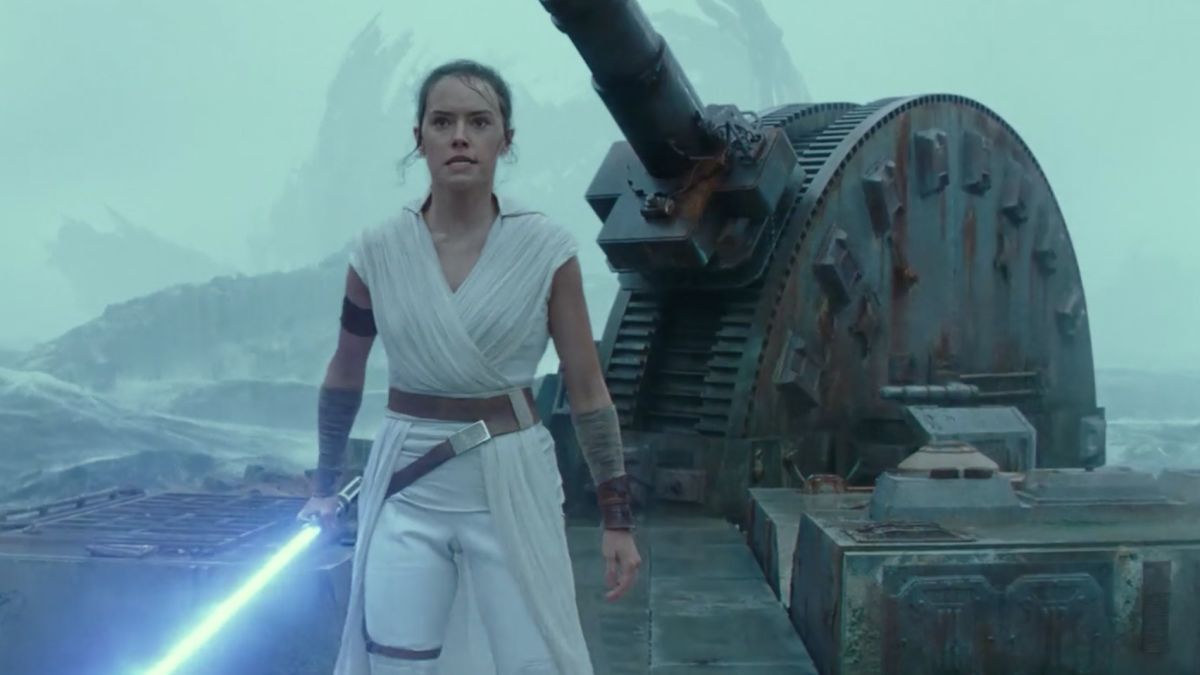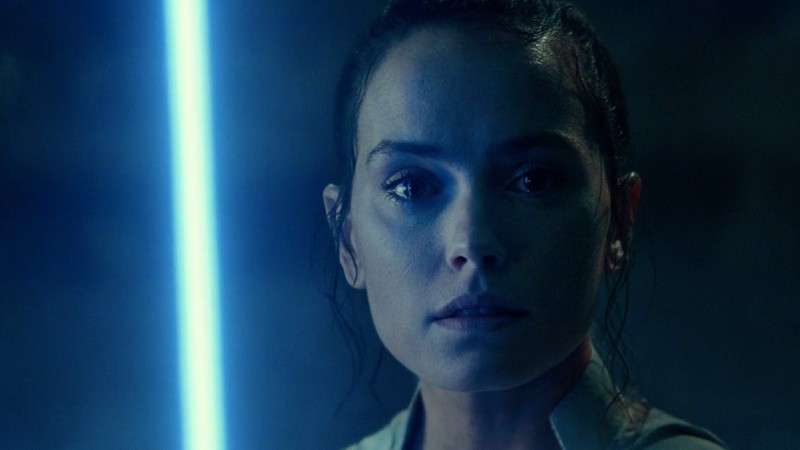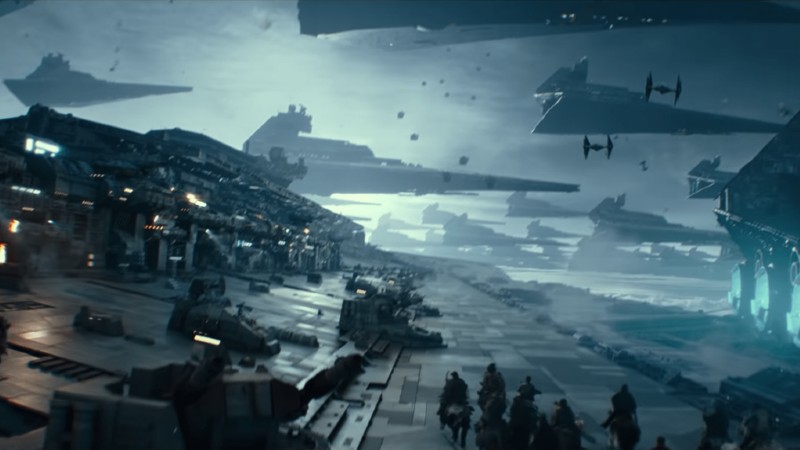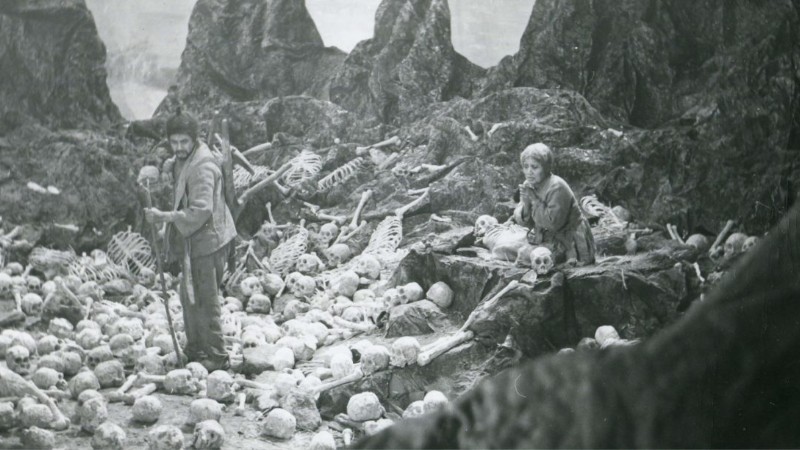As it stands, J.J. Abrams’s Star Wars: The Rise of Skywalker (2019) has divided opinion among the hard-core fan base and casual cinemagoers unlike any film since, well… the last Star Wars movie. Many believe it to be a rollicking adventure that flits from one gorgeous location to another, and with the introduction of new and old characters, livens the up last chapter to a fitting finale and enjoyable film overall. On the other hand, the film’s naysayers point at its many sinkhole sized plot holes and editing structure that means the film moves at a pace best suited to hyperspace travel than the usual 24 frames per second.
Since its release in December 2019, I’ve had a chance to see the film again and with refreshed eyes and lower expectations have still not fully comprehended the impact this film has on all the previous episodes and its impact on the popular discourse as a whole. Yes, it’s a fairly enjoyable galactic romp, but, my guess is, much like Rian Johnson’s The Last Jedi (2017), it will be overanalysed and dissected to such a point and at such great length that the internet will still be in discourse when the next set of Star Wars films hits cinema’s sometime in late 2022.

.
Back to the past
My own initial disappointment comes from many different aspects of the film. The retcon of everything interesting about The Last Jedi and the direction that film took the franchise in, the reversal of characterisation developed, the idea that The Force was for everyone and not just a prestige bloodline. One point of severe disappointment is the very end of the film. As The Rise of Skywalker was pushed as a final instalment that concludes 42 years of storytelling, but the sheer lack of completion and closure is so apparent as to bring the whole saga crashing down.
The film ends with the rag-tag Resistance defeating the combined evil forces of the First Order/Empire/Sith and with this the restoration of order and peace has been brought to the galaxy. This is what we are led to believe, anyway. After the battle has been won, the trilogy’s main protagonist Rey takes a solo journey to Tatooine, the desert planet we first saw in 1977’s Star Wars: A New Hope (George Lucas) and a location we would return to again in Return of the Jedi (Richard Marquand, 1983), The Phantom Menace (George Lucas, 1999), Attack of the Clones (George Lucas, 2002) and very briefly in Revenge of the Sith (George Lucas, 2005).
On Tatooine, Rey visits the old farm homestead of Owen and Beru Lars, Luke Skywalker’s uncle and aunt and the couple that raised him since his birth. Rey buries both Luke and Leia’s lightsabers in the desert sand and when asked by a passer-by who she is Rey answers that she is Rey (long pause) Skywalker. The final locale Rey chooses to bury Luke and Leia’s Jedi lightsabers and the name she adopts is actually quite fitting when one takes into consideration the impact the planet and the Skywalker clan has had within the entire arc. Tatoonie has been the home of Anakin and Luke Skywalker after all. We have returned again and again to this dust ball in the outer reaches of the galaxy and it has been the location of much struggle, pain and peace. However something is amiss with this ending. Whilst we get an inkling of the completion of Rey’s story arc, there is little knowledge as to how the galaxy as a whole will continue on.

.
Searching for answers
So many questions arise. Has democracy been restored? Does the defeat of Emperor Palpatine and the First Order mean that The Republic, the one that lasted thousands of years before the events of The Clone Wars (Dave Filoni, 2008) and the rise of The Empire resurfaces to restore justice? We sense that at the end of 1983’s Return of the Jedi that a relative peace and continuation of that era will be restored. After all, within The Rebellion there are past remnants of that Republic. Seasoned Senators such as Mon Mothma and military leaders such as Admiral Ackbar seem destined to have a leading hand in restoring the galaxy back to representative democracy.
Although, now thanks to the post-Return of the Jedi Disney+ series. The Mandalorian, set just a few years after Luke Skywalker’s last adventure, we know that the entire galaxy was not brought to peace and justice and that lawless pockets and remnants of the Empire still hold incredible sway, hence the title character’s ease at operating as a bounty hunter within an organised guild of fellow assassins.
The Sequel Trilogy set 30 or so years later squashes this assumption even further. We are now aware that a new Republic did arise, but alongside it a well-funded military junta hell-bent on its destruction and the enslavement of millions to its cause.
The end of the Prequel Trilogy also gives us galactic oversight in these matters. We are made fully aware that The Empire has seized control. It’s not a positive outcome in any way, but the overall arc is complete. With the Sequel Trilogy ending on such ambiguous notes the fate of the galaxy is unknown. At this point I would point readers towards the podcast What The Force (especially their reaction podcast to TROS) presented by Marie-Claire Gould and Ty Black and their deep-dives into the Sequel Trilogy’s lack of a fulfilling narrative arc, particularly the hero’s journey, or monomyth set out by Joseph Campbell and adopted by George Lucas for his saga. This journey is ignored in The Rise of Skywalker, which might add to its hollowness. The Rise of Skywalker and failings of the trilogy as a whole become grossly apparent when seen through this lens.
There are a few clues as to what might be in store for the wider galaxy. None of them, unfortunately, point to a very positive future. The final battle of Exogol sees thousands of ships join the call put out by rebel-hero Lando Calrissian to take up arms against the revived Emperor. Piloting the iconic (to the audience, but also to the citizens of the galaxy) Millennium Falcon, Calrissian leads the charge of a mismatch of ships and vessels. Who are these saviours? As one First Order officer comments: “it’s not a navy, it’s just people.” And that is what indeed the freedom fighters are; a random alignment of people, factions, organisations, militias, bounty hunters, spice runners, warlords, crime syndicates and lone wolfs. Anyone with a ship and a gun is welcome to the fight. In the grand scheme it makes for an affecting circumstance. Across the galaxy, people have put aside their differences and rivalries to come together and fight against tyranny. But, with no real outcome for the galaxy, and no real replacement in mind, surely the factionalism and rivalry will re-emerge as a leader to the rabble vies for control. Tin-pot-dictators and quasi-fascist blowhards are maybe all that is in store for the galaxy. Certainly no Bernie Sanders or Jeremy Corbyn type figures appear to be on the horizon to promote the much needed, though very unsexy, discussions about wealth redistribution, renationalisation of hyperspace lanes, jobs programs and healthcare for all.
We don’t, in this instant, need to look to the Star Wars Universe to know that revolution without consensus or demands of what comes after is usually a harbinger of more problems. We can look to real world events.

.
Earthly wars
Libya, for a modern and still unfolding example, is a failed state of factions and military commanders fighting for power over regions and pockets of the country. The installation of a post-Colonel Gaddafi government has failed to quash insurrection and day-to-day life for citizens is a terrifying ordeal. To put it mildly, unplanned revolution often disintegrates into a much harsher reality. There are of course positive examples to draw on. The call for representative democracy that was the Arab Spring of 2010/11 engulfed Tunisia, Egypt, Bahrain, Yemen, Syria and Libya and overthrew or at least reduced power of a gallery of merciless dictators. But, again, without consensus there has been a vacuum of power within these countries that has meant an even worse predicament for those citizens that demanded change as power-players and loyalists fought for power, or as is the case in Syria with President Bashar al Assad who continues to violently suppress the uprising and cling to his position of authority.
The Occupy Wall Street movement that began in September 2011 in New York’s Zuccotti Park and spread throughout the world was a valiant attempt to forge a new world consensus based on individual participation and a collective agreement that the chips were fully stacked with the richest one percent. In many ways, Occupy’s message wasn’t a failure as such, but was simply too opaque, with no list of demands or a vision for a replacement of capitalist greed the movement disintegrated and dispersed. Many of the movement’s participants have splintered off towards other causes such as the call for a $15 dollar minimum wage, the abolishing of college tuition fees, and Medicare for all. As a political training field, Occupy may still prove to be fruitful.
In the aftermath of the final battle in The Rise of Skywalker a similar situation could easily befall the post-war galaxy. Yes, the evil Sith have been defeated, yes, the First Order are no more, yes, the ethos of the Jedi and the Resistance emerge victorious, but every potential leader, every guiding voice of reason, every legendary hero has vanished either in death (Luke, Leia, Han) or in influence (Calrissian, Wedge Antilles). This means that the galaxy is now actually in far worse position than when the saga began all those years ago. No Republic, no Jedi Council, No obvious leader among the rabble of combatants that fought at Exagol. Tyranny, on a mass scale might have been vanquished, but now sectors, planets and star systems are on their own with little in common and perhaps no real desire to unify themselves for the betterment of the galaxy only for personal gain and personal fortune. Factionalism and internal squabbling will become abundant in this new era. Now the galaxy far, far away may also become a galaxy very distant within itself. Surely not the outcome foreseen all those years ago.
The images on this article are from ‘Star Wars: the Rise of Skywalker’, except for the image at the top, which is from the Occupy Wall Street movement









